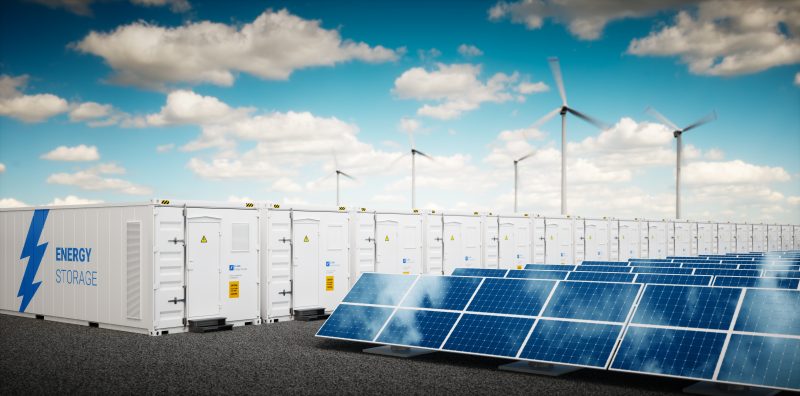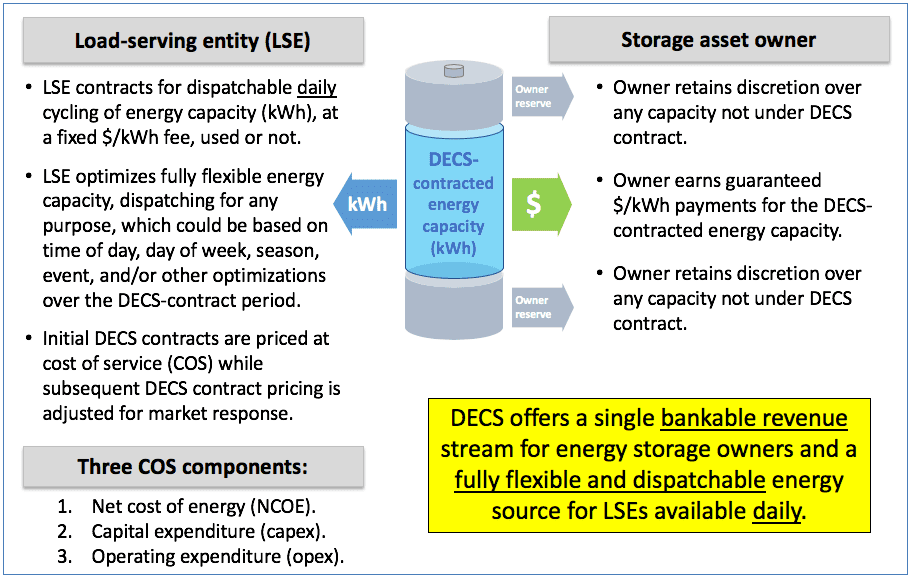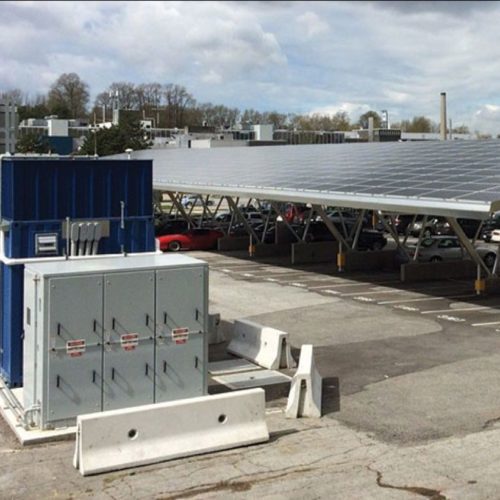The Best Ideas from COP30, the UN Climate Summit in Brazil – 18 December 2025
The Clean Coalition was a partner organization for this webinar, which took place on 18 December 2025 at 10am.
Read More
Market mechanisms for Dispatchable Energy Capacity Services (DECS)
If a utility or other load-serving entity (LSE), such as a Community Choice Energy (CCE) program, wants to encourage the development of energy storage, the Clean Coalition recommends a Dispatchability Adder. A Dispatchability Adder, a fixed ¢/kilowatt-hour (kWh) bonus on top of the Feed-In Tariff (FIT) rate, offers a value for the Dispatchable Energy Capacity Services (DECS) provided by solar+storage.


Pairing local renewables with local energy storage can provide many benefits to the grid and associated value to an area. These benefits and values include:
When an energy storage system is deployed in conjunction with an ITC-qualifying resource, the ITC can be applied to the cost of the entire system. This means that the benefits of energy storage can be secured at a lower cost than otherwise possible.

For an energy storage project to be eligible for the Dispatchability Adder, it must meet certain operational requirements, which could include:
Dispatchable renewables facility owners would be compensated via a Dispatchability Adder for their full kWh deliverability rating daily — or if the total energy delivered on a given day is less than the kWh deliverability rating due to unfavorable weather or a poorly performing facility, then the Dispatchability Adder will be applied on the total energy delivered. Any shortfalls from the contracted levels under the Dispatchability Adder must be justifiable weather-driven or planned maintenance reasons. Unjustified shortfalls would be result in penalties, and three or more unjustified shortfalls within a rolling twelve-month period could result in termination of the Dispatchability Adder for the offending facility.
The Market Responsive Pricing (MRP) structure can be applied to the Dispatchability Adder. Such a mechanism can be designed to adjust the Dispatchability Adder (¢/kWh), either up or down, based on whether the market is able to deliver dispatchable renewable energy at the offered price. Through offering capacity in predictable, quarterly allocations, the LSE will drive an efficient dispatchability adder, sustained by MRP in order to reduce dispatchable energy pricing over time.
Example: If a FIT using MRP for its Dispatchability Adder allows the first 1.5 MWh of capacity to contract at a starting fixed price, then if the first 1.5 MWh tranche fills quickly with projects, the price paid for the following 1.5 MWh tranche is reduced by a predetermined adjustment. If, on the other hand, the first 1.5 MWh of available capacity is not procured within the planned time frame, then the fixed price adjusts upward by a predetermined increment after a set time period for the subsequent tranche.

These guidelines detail our recommended Dispatchability Adder with an MRP mechanism for the LSE’s FIT program:
Downward price adjustment
No price adjustment
Upward price adjustment
For the City of San Diego, the Clean Coalition designed a FIT with streamlined interconnection that includes a Dispatchability Adder and MRP. The price paid under the FIT for both solar and storage adjusts based on market response, ensuring that the LSE pays the optimal price for clean local energy. MRP is critical to successful procurement under the San Diego FIT.
The only approach that has been proven to unleash wholesale distributed generation (WDG) in the United States.
The latest in clean local energy
Learn about our innovative projects and initiatives on our blog, and see what others are reporting about our important work.
The Clean Coalition was a partner organization for this webinar, which took place on 18 December 2025 at 10am.
Read MoreThis podcast episode of Energy Central's "Power Perspectives" welcomes Craig Lewis, Founder and Executive Director of the Clean Coalition, to explore how local solar and storage can flatten the duck curve, cut costs, and build a more resilient grid.
Read articleThe Clean Coalition presented during this in-person gathering, held on Friday, 5 December 2025 from 3:30–5:00 pm PST at CEC’s Environmental Hub, 1219 State St Suite A, Santa Barbara, CA 93101.
Read More